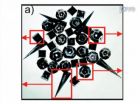(Press-News.org) ALEXANDRIA, Va. – Co-sponsors of the 2013 Genitourinary Cancers Symposium announced today important research to be presented at this year's meeting, taking place February 14-16 at the Rosen Shingle Creek in Orlando, Florida. Three of the featured studies focus on the prevention, diagnosis and treatment of prostate cancers; another study looks at a new immunotherapy for metastatic kidney cancer.
Thursday, February 14 Presentations
Abstract # 10: Long-term survival of subjects in the prostate cancer prevention trial.
General Poster Session A
Thursday, February 14, 2013, 11:45 AM – 01:15 PM EST
Thursday, February 14, 2013, 05:05 PM – 06:35 PM EST
Rosen, Gatlin Ballroom B
Phyllis J. Goodman, M.S.
SWOG Statistical Center
Seattle, WA
"A randomized trial designed to evaluate finasteride as a chemopreventative agent in prostate cancer has been previously reported (NEJM 349:213-222, 2003) and demonstrated an almost 25% reduction in the risk of being diagnosed with prostate cancer over a 7-year period for those receiving finasteride as opposed to placebo; and an increased risk of higher Gleason grade tumors in those receiving finasteride, although it was unclear whether this latter finding represented a true change in the biology of the tumors in response to finasteride, or an artificial by-product on the way the trial was conducted. If finasteride truly affected the natural history of the cancer, then this should be reflected as a long-term reduction of survival in this group. In this report, with follow-up to 18 years, 7-year administration of finasteride does not decrease overall mortality from prostate cancer despite the diagnosis of higher grade tumors, but significantly reduces the risk of a prostate cancer diagnosis."
– Bruce J. Roth, MD
Member, 2013 Genitourinary Cancers Symposium News Planning Team
American Society of Clinical Oncology (ASCO)
Abstract #32: Validation of the biopsy-based genomic prostate score (GPS) as a predictor of high-grade or extracapsular prostate cancer to improve patient selection for active surveillance (AS).
General Poster Session A
Thursday, February 14, 2013, 11:45 AM – 01:15 PM EST
Thursday, February 14, 2013, 05:05 PM – 06:35 PM EST
Rosen, Gatlin Ballroom B
Matthew R. Cooperberg, MD, MPH
University of California, San Francisco
San Francisco, CA
"PSA based screening for prostate cancer has resulted in the increased diagnosis of many cases of clinically insignificant prostate cancer that will never harm a man in his lifetime. This has popularized the concept of active surveillance where patients are monitored rather than definitively treated for their localized prostate cancer. The development of this genomic prostate score (GPS) provides a unique new tool with more information than is currently routinely available to allow physicians and their patients to choose the prostate cancer active surveillance approach with confidence."
– Leonard G. Gomella, MD, FACS
Member, 2013 Genitourinary Cancers Symposium News Planning Team
Society of Urologic Oncology (SUO)
Abstract #28: The effect of therapeutic anticoagulation on overall survival (OS) in men receiving docetaxel chemotherapy for metastatic castration-resistant prostate cancer (mCRPC).
General Poster Session A
Thursday, February 14, 2013, 11:45 AM – 01:15 PM EST
Thursday, February 14, 2013, 05:05 PM – 06:35 PM EST
Rosen, Gatlin Ballroom B
Caroline F. Pratz, CRNP
Johns Hopkins Sidney Kimmel - Comprehensive Cancer Center
Baltimore, MD
Saturday, February 16 Presentations
Abstract #357: Prolonged survival with personalized immunotherapy (AGS-003) in combination with sunitinib in unfavorable risk metastatic RCC (mRCC)
General Poster Session C
Saturday, February 16, 2013, 06:45 AM – 07:55 AM EST
Saturday, February 16, 2013, 11:50 AM – 01:05 PM EST
Rosen, Gatlin Ballroom B
Asim Amin, MD, PhD
Carolinas Medical Center
Blumental Cancer Center
Charlotte, NC
"Advanced metastatic kidney cancer carries a poor prognosis with newer oral medications and immunotherapy each showing some modest improvements in survival. This study uses a patient's own specific cancer fighting immune cells (AGS-003) in combination with a standard oral medication, sunitinib, known as a targeted therapy that blocks kidney cancer's specific pathways that contribute to cancer growth and survival. This novel combination therapy using patient specific immunotherapy combined with an oral agent showed significant benefits with a doubling of survival in patients with aggressive metastatic kidney cancer. This is very encouraging and will need to be confirmed in a larger number of patients."
– Leonard G. Gomella, MD, FACS
Member, 2013 Genitourinary Cancers Symposium News Planning Team
Society of Urologic Oncology (SUO)
2013 Genitourinary Cancers Symposium News Planning Team
Bruce J. Roth, MD, American Society of Clinical Oncology (ASCO); Mark K. Buyyounouski, MD, American Society for Radiation Oncology (ASTRO); Leonard G. Gomella, MD, FACS, Society of Urologic Oncology (SUO).
###
For information on progress against cancer, visit www.CancerProgress.Net.
ATTRIBUTION TO THE 2013 GENITOURINARY CANCERS SYMPOSIUM IS REQUESTED IN ALL NEWS COVERAGE.
A team of researchers from Russia, Spain, Belgium, the U.K. and the U.S. Department of Energy's (DOE) Argonne National Laboratory announced findings last week that may represent a breakthrough in applications of superconductivity.
The team discovered a way to efficiently stabilize tiny magnetic vortices that interfere with superconductivity—a problem that has plagued scientists trying to engineer real-world applications for decades. The discovery could remove one of the most significant roadblocks to advances in superconductor technology.
Superconductors are extremely ...
Electric rocket engines known as Hall thrusters, which use a super high-velocity stream of ions to propel a spacecraft in space, have been used successfully onboard many missions for half a century. Erosion of the discharge channels walls, however, has limited their application to the inner solar system. A research team at Caltech's Jet Propulsion Laboratory, in Pasadena, Calif., has found a way to effectively control this erosion by shaping the engine's magnetic field in a way that shields the walls from ion bombardment.
Ions are produced in Hall thrusters when electrons ...
CAMBRIDGE, Mass. (February 13, 2013) – Whitehead Institute researchers have identified a previously unrecognized layer of genetic regulation that is necessary for the generation of undesirable white fat cells. When this regulation is disrupted, white fat cells are unable to accumulate lipid droplets or mature from their precursors.
"We're trying to figure out what the mechanism is—what it takes to make fat cells," says Whitehead Founding Member Harvey Lodish, who is also a professor of biology and a professor of bioengineering at MIT. "The obvious reason we're interested ...
Philadelphia, Pa. (February 13, 2013) – For many patients with difficult-to-treat neuropathic pain, deep brain stimulation (DBS) can lead to long-term improvement in pain scores and other outcomes, according to a study in the February issue of Neurosurgery, official journal of the Congress of Neurological Surgeons. The journal is published by Lippincott Williams & Wilkins, a part of Wolters Kluwer Health.
About two-thirds of eligible patients who undergo DBS achieve significant and lasting benefits in terms of pain, quality of life, and overall health, according to the ...
A new University of Alberta study shows that busy beavers are helping Canada geese get an earlier start when the birds fly home and begin spring nesting.
Ponds in Alberta where beavers were active tended to result in earlier thaw of winter snowpack, giving the geese a better chance at reproductive success, according to the study, published recently in Mammalian Biology.
The study is the first to link beavers to early season nesting habits of Canada geese in a Northern climate.
A team led by Glynnis Hood, an associate professor in the Department of Science at the ...
Government limits on mold toxins present naturally in grain crops should be expanded to include so-called "masked mycotoxins" that change from harmless to potentially harmful forms in the body, a new study concludes. It appears in ACS' journal Chemical Research in Toxicology.
Chiara Dall'Asta and colleagues explain that molds growing naturally on wheat, corn and other plants produce toxic substances termed mycotoxins. Some health experts regard mycotoxins as the most serious chronic dietary risk factor, greater than the potential health threats from pesticides and insecticides. ...
February 13, 2013
Cambridge, MA: The nanotechnology research space is rapidly growing, with vast implications for the healthcare, consumer electronics, surveillance, and defense industries. However, a major limitation to this research is the ability to create particles that vary in shape and function on a micrometer or nanometer scale.
To overcome these limitations, chemical engineers at Johns Hopkins University have developed self-assembling particles that are inspired by origami, the traditional Japanese art of folding paper into complex three-dimensional shapes. ...
CAMBRIDGE, MA -- Silicon, the material of high-tech devices from computer chips to solar cells, requires a surface coating before use in these applications. The coating "passivates" the material, tying up loose atomic bonds to prevent oxidation that would ruin its electrical properties. But this passivation process consumes a lot of heat and energy, making it costly and limiting the kinds of materials that can be added to the devices.
Now a team of MIT researchers has found a way to passivate silicon at room temperature, which could be a significant boon to solar-cell ...
HOUSTON - Researchers have identified a pivotal protein in a cellular transformation that makes a cancer cell more resistant to treatment and more capable of growing and spreading, making it an inviting new target for drug development.
Additionally, the international team led by scientists at The University of Texas MD Anderson Cancer Center found the cancer drug sunitinib potentially has a new role in treating triple-negative, claudin-low breast cancer, a particularly resistant version of a type of cancer that is already difficult to treat.
"We found that FOXC2 lies ...
New data from NASA's Chandra X-ray Observatory suggest a highly distorted supernova remnant may contain the most recent black hole formed in the Milky Way galaxy. The remnant appears to be the product of a rare explosion in which matter is ejected at high speeds along the poles of a rotating star.
The remnant, called W49B, is about a thousand years old as seen from Earth and located about 26,000 light-years away.
"W49B is the first of its kind to be discovered in the galaxy," said Laura Lopez, who led the study at the Massachusetts Institute of Technology. "It appears ...


